 Loading...
Loading...
Initial language selection is based on your web browser preferences.



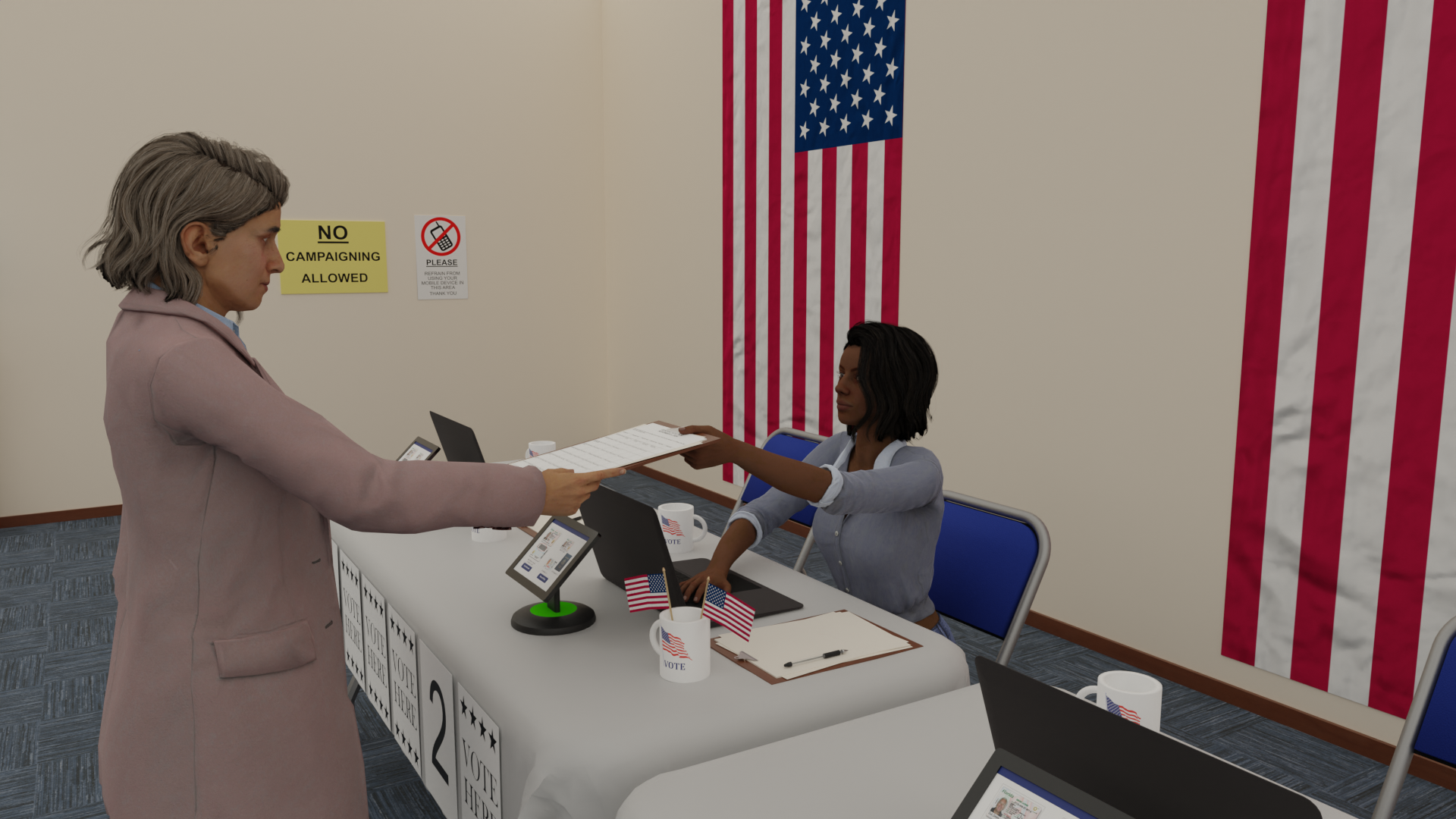
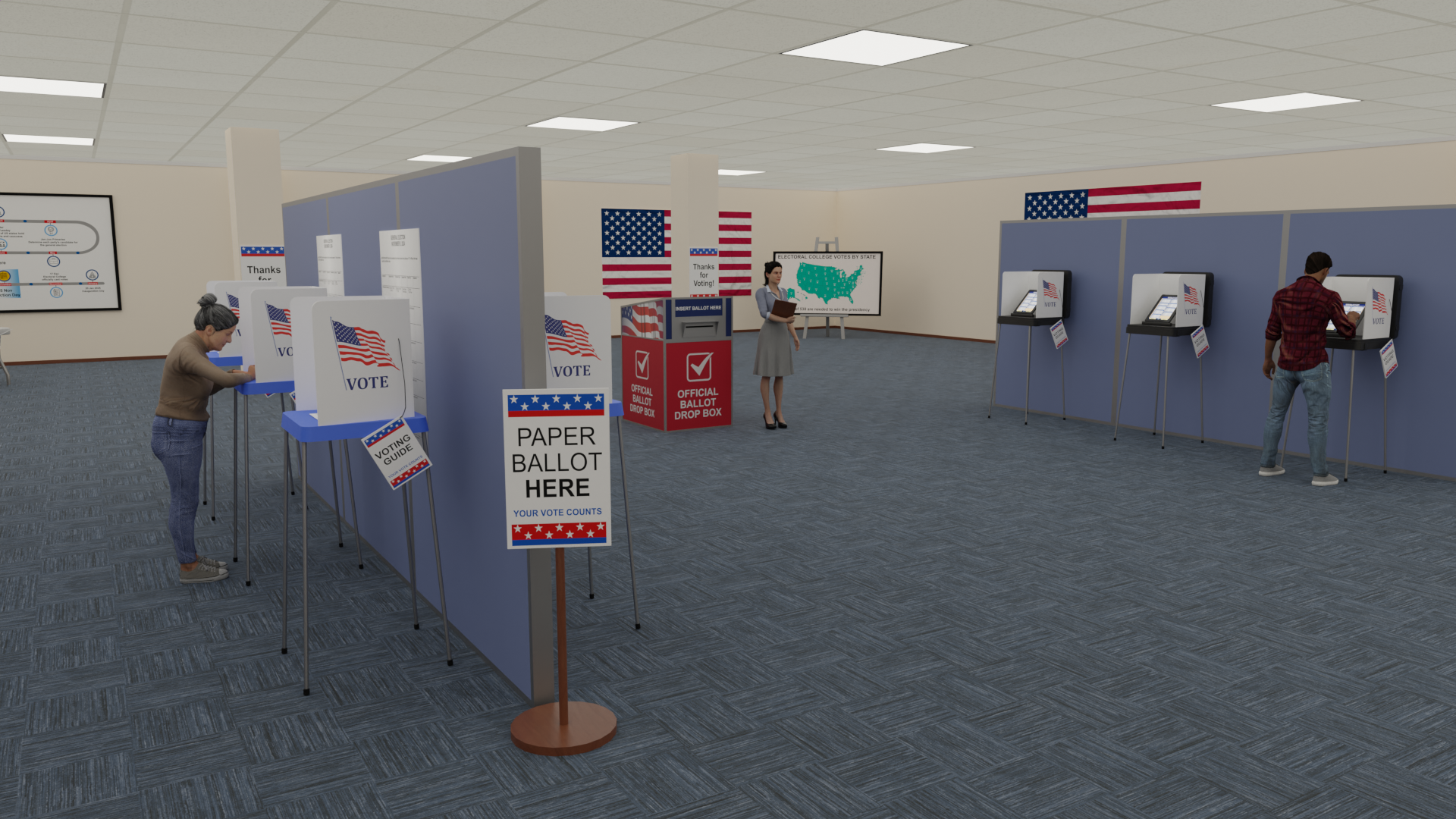

This experience has been created to give students an understanding of the voting process in the United States. It aims to represent a typical voting hall, paper ballot, and devices to provide a general idea, but it serves as an overview rather than a detailed representation of every aspect of voting across the U.S. For example, on the ballot paper, we've used fictional names for all candidates except for the President and Vice President. # Learning Objectives 1: Understand voter experience, including registration and eligibility across the U.S.{.info} 2: Participate in the voting process, identifying both digital and paper ballots{.info} 3: Develop an understanding of the Electoral College and its impact on election outcomes{.info} # Preparing for the Experience Explain to your students that voter registration processes vary from state to state, with each state setting its own rules and requirements for how and when individuals can register to vote. However, U.S. citizenship is one aspect of voting that remains consistent across all states. Citizenship is required to participate in federal elections; however, in local elections, some states will allow non-citizens to vote. Citizens are called to cast their ballots for federal elections on the first Tuesday after the first Monday in November! This nationwide Election Day, set by law in 1845, was perfect for the agrarian society of the time—farmers could vote after the harvest in mild November weather. This date was originally set for presidential elections only, but it now includes congressional races, too. **Preparation Questions** Ask your students: What do you already know about how voting works in your state?{.task} Can you name some ways people can vote (e.g., in-person, mail-in, absentee)?{.task} What challenges do you think people face when trying to vote?{.task} # Step-by-Step Experience Guide Teachers can use this step-by-step guide to lead students through the experience once they are in the headset. Alternatively, students can use the guide below independently, or in a group. ## Prepare to Vote!{.objective .objective1} 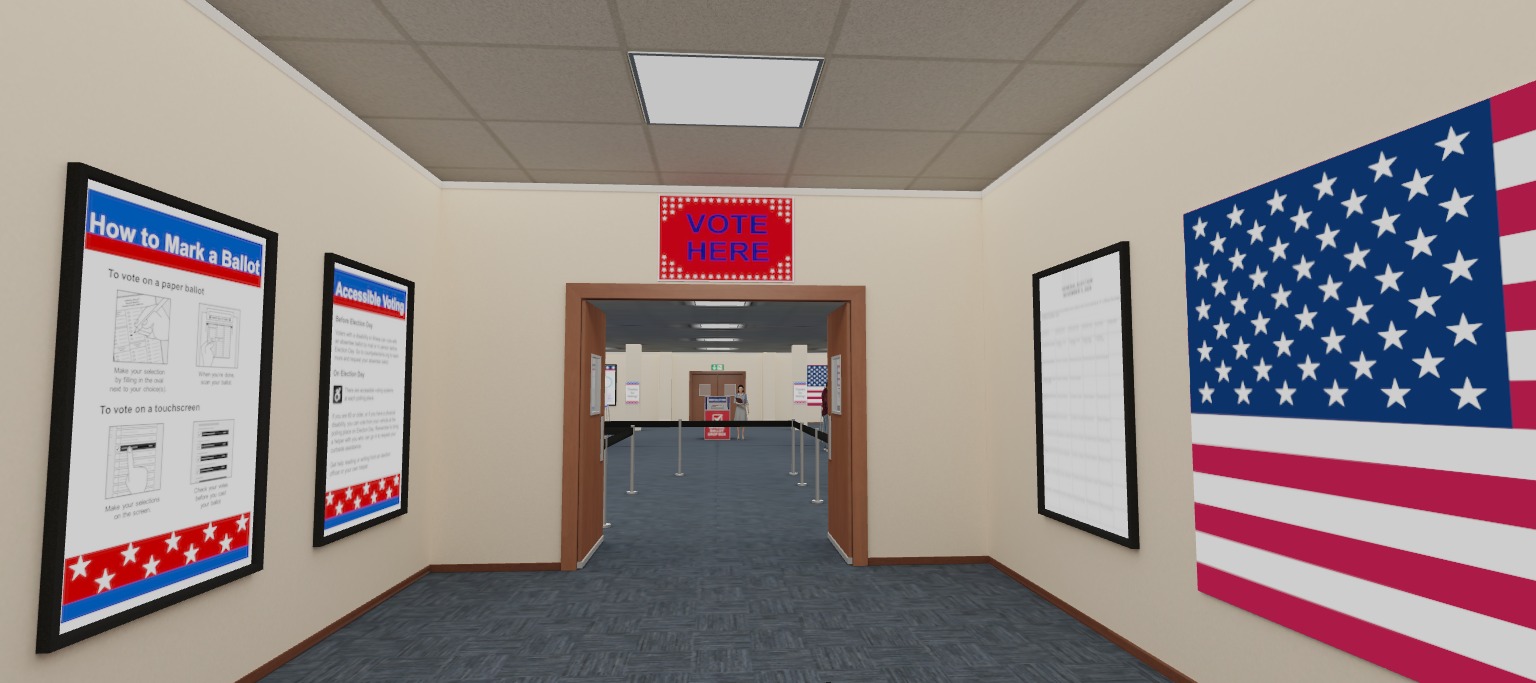 You’ve arrived at your polling station, make sure you’ve got everything you need. To your left, you’ll see posters that will guide you through. Remember to check the “You have the Right to” poster, it will give you some key information including, what your eligibility is, whether you can bring a child into the booth, and how much support you can expect to receive. In the United States, these rights haven’t always been guaranteed for everyone. Throughout history, various groups have faced significant barriers to voting, including discriminatory laws, literacy tests, poll taxes, and intimidation at the polls. ## Quick Fire Questions What key information can you find on the "You Have the Right to" poster at the polling station?{.task} Look at the posters, what can you say about accessible voting? How do you think this helps people who need it?{.task} What forms of ID are needed to vote in states that mandate voter ID?{.task} ## Voter Verification{.objective .objective2}  Up next, you'll go through the process of voter verification. Not all states require ID to vote, but you'll need to present a valid form of identification in those that do. This could include a driver's license, state-issued ID, passport, or other accepted documents, depending on the state's specific requirements. As you move toward the poll worker at the front desk, you'll notice an electronic poll book. Historically, voting jurisdictions have used paper poll books that list eligible voters in the district or precinct. However, modern technology is now used more widely. Electronic poll books allow voters to sign in electronically, quickly retrieve a person's personal data, and can help verify a person's photo ID. This is an example of an in-person voting station on election day. You'll see the voter ahead of you receiving her hand-marked paper ballot. After you vote, these paper ballots are typically counted by an electronic scanner or, in rare instances, by hand. ## Quick Fire Questions What do you notice about the use of technology?{.task} What are the benefits of using electronic poll books compared to traditional paper poll books?{.task} ## Paper Ballot{.objective .objective3} 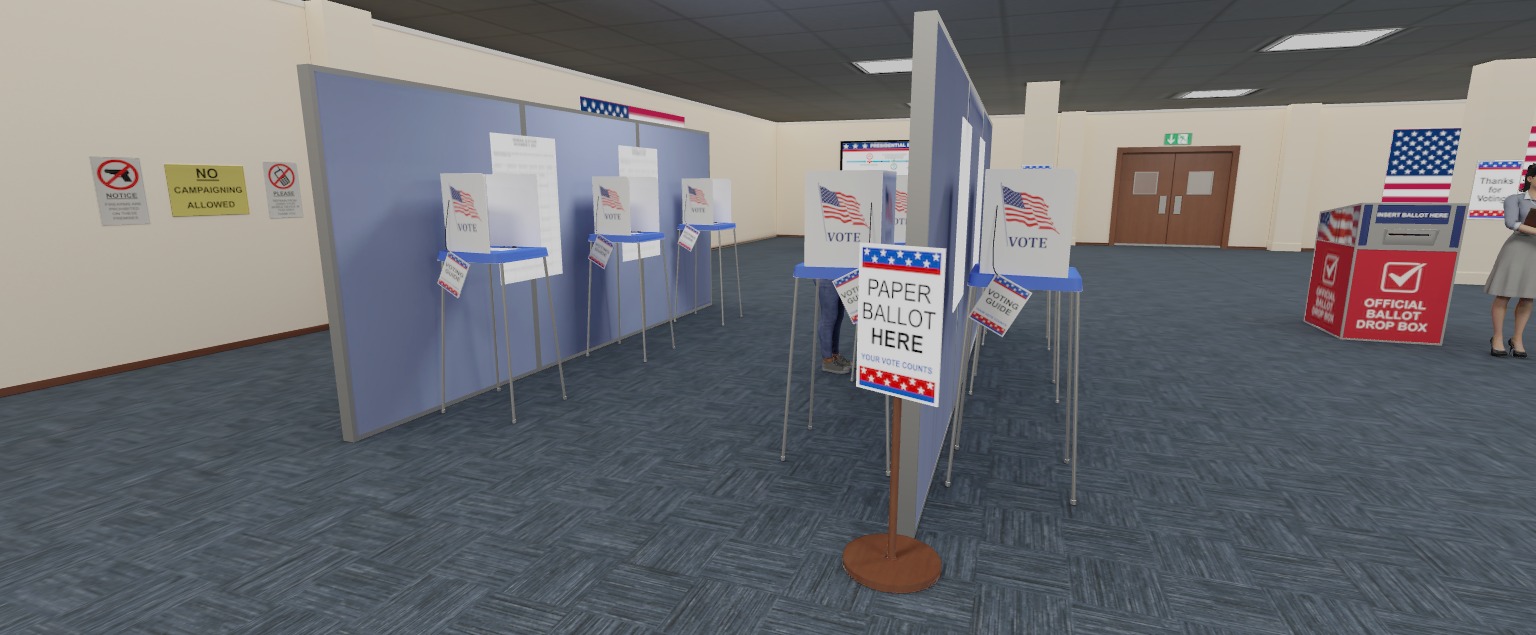 Stepping toward the paper ballot booths, you will see an example of a sample ballot paper. In this experience, we've included presidential and vice-presidential candidates, but the other positions are fictional. Hanging off the paper ballot stand is the voting guide. Voter guides give information about the candidates, their goals, and explain ballot measures, which are issues you can vote to approve or reject. On the walls next to the voting booths, you'll see an enlarged paper ballot, designed to give you an idea of what the paper ballot looks like. Each voting booth is cornered off with a private screen for confidentiality. This approach, known as the Australian Ballot, was first adopted by the American electoral system during the 1888 presidential election. It ensures that voters can cast their ballots freely, without fear of intimidation. ## Quick Fire Questions Why might it be helpful to view a sample ballot beforehand?{.task} What purpose do voter guides serve at polling stations?{.task} What do you notice about the privacy of the voting booths. Why do you think this is important?{.task} ## Digital Ballot{.objective .objective4} 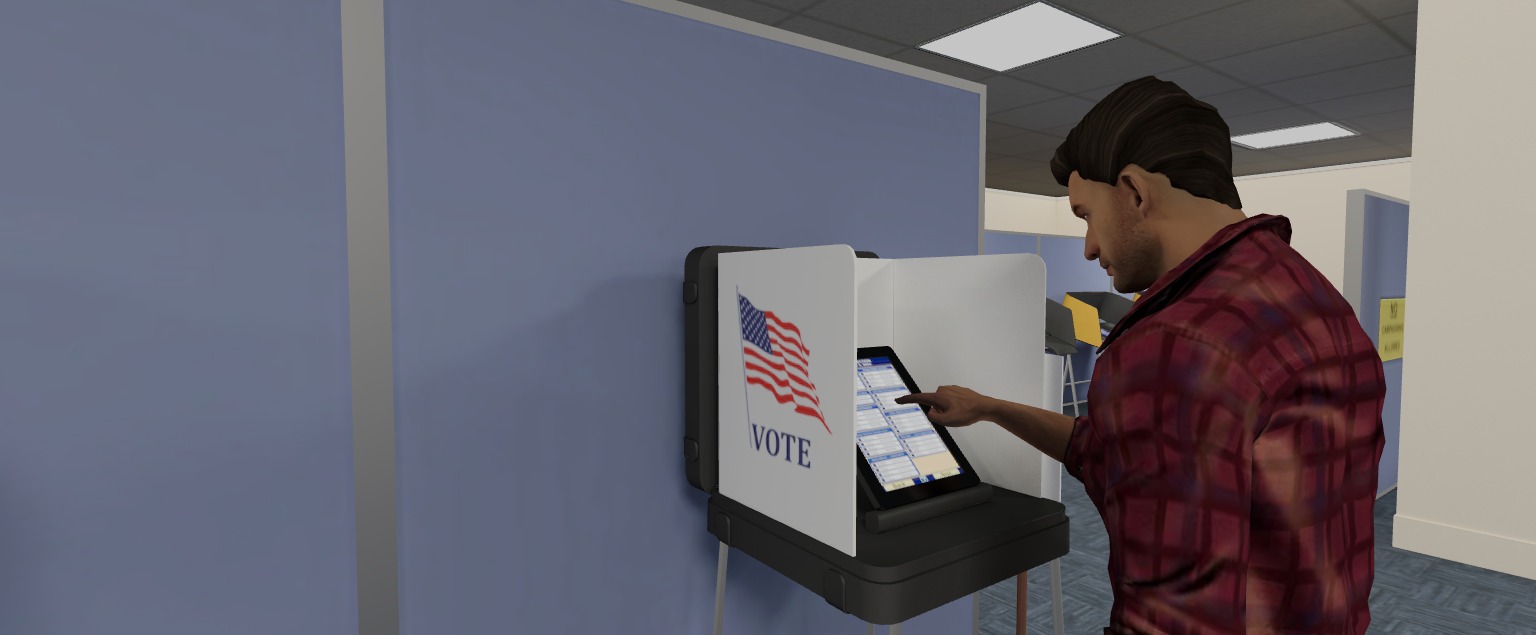 As you approach the male voter, you'll see that he's marking his ballot using a more modern method. Voting technology can vary depending on the state you live in. Most use a combination of electronic and paper technology. However, the use of electronic voting machines isn't without controversy, especially due to concerns over security, the potential for hacking, and lack of a reliable paper trail for audits. ## Quick Fire Questions In the experience, there are different methods of in-person voting. Can you name some benefits and disadvantages of each?{.task} Why might some states prefer electronic voting machines over paper ballots?{.task} What are some concerns people might have about using electronic voting machines?{.task} ## Accessible Voting{.objective .objective5} 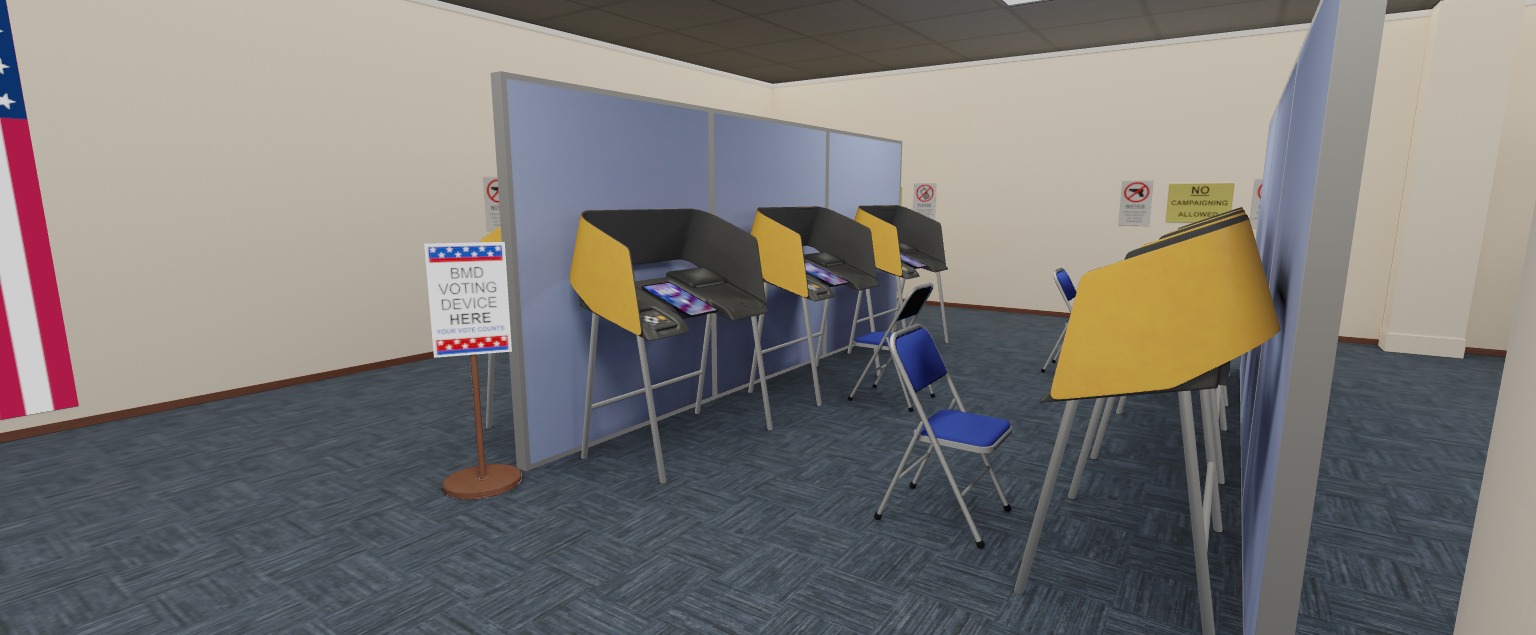 Head toward the BMD voting device area. BMD, which stands for Ballot Marking Device, is a more intuitive and accessible way for many, including those with disabilities, to vote independently and privately. The BMD guides the user with screen prompts and symbols. It also features an adjustable table, touchscreen, and audio-tactile interface. Voters insert their ballot into the device to activate the voting process and then put their marked ballot in the ballot box. You might notice that there are a few different language options on the BMD, too. This is because under the 1975 Voting Rights Act, Section 203, thirty states are obligated to provide non-English-speaking voters with materials in their own language in at least one polling place within that state. The languages chosen will depend on the area's census. In the U.S., several key acts protect the voting rights of individuals with differing abilities, including the 1965 Voting Rights Act, which protects the right to vote for those who can’t read and write, and the Help American Vote Act of 2002, which requires polling places to have at least one accessible voting machine for people with disabilities. ## Quick Fire Questions What languages can you see available on the BMD machine, and why is this important for voters?{.task} Why do you think it’s important that the government protects the voting rights of people with individuals?{.task} How does providing assistance through voting machines promote inclusivity in the electoral process?{.task} ## Posting your Vote!{.objective .objective6} 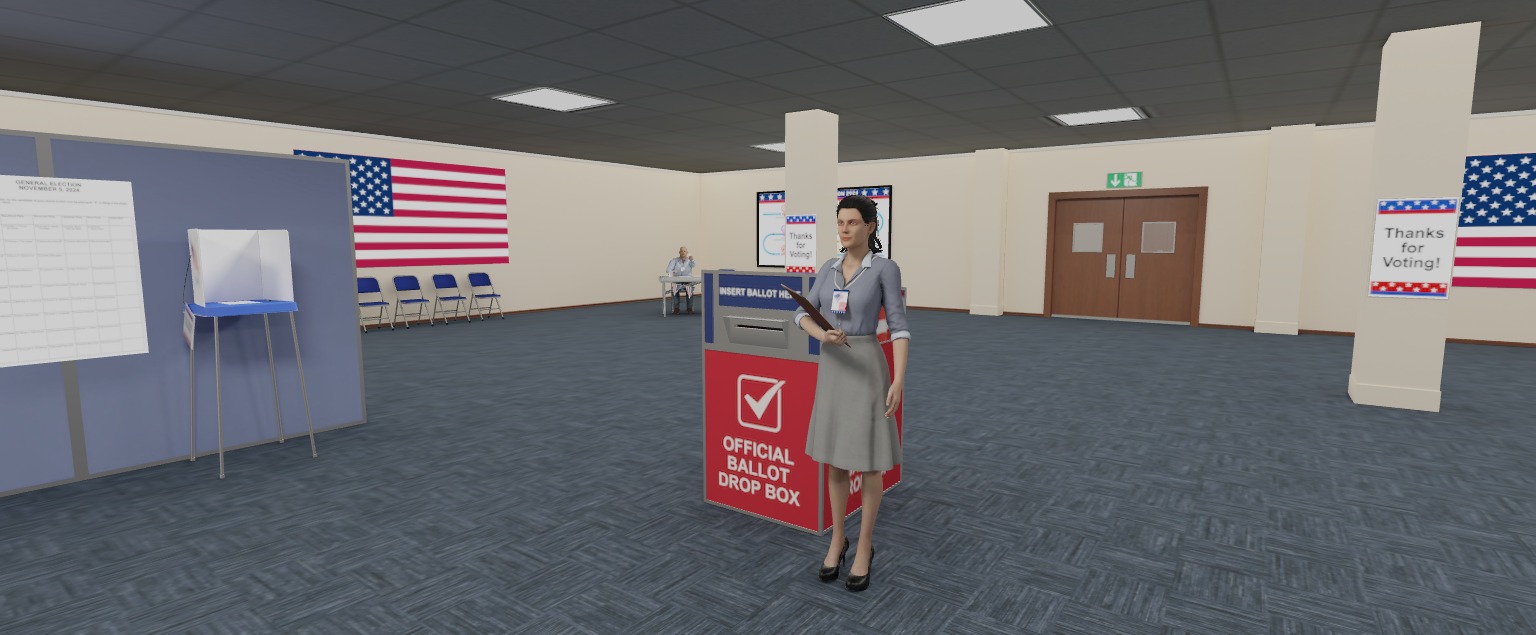 Step forward and cast your ballot in the official drop box. U.S. election administration varies locally, but officials follow strict procedures with multiple safeguards to ensure security. Most voters scan their ballots at polling places, though some are centrally scanned or manually counted, and a few use electronic machines. Ballots and vote records are securely stored and transported. ## Quick Fire Questions What advantages do printed ballots offer over older voting methods, such as calling out choices in public?{.task} Why do you think multiple safeguards are necessary in the voting process?{.task} ## Mapping the Electoral College {.objective .objective7} 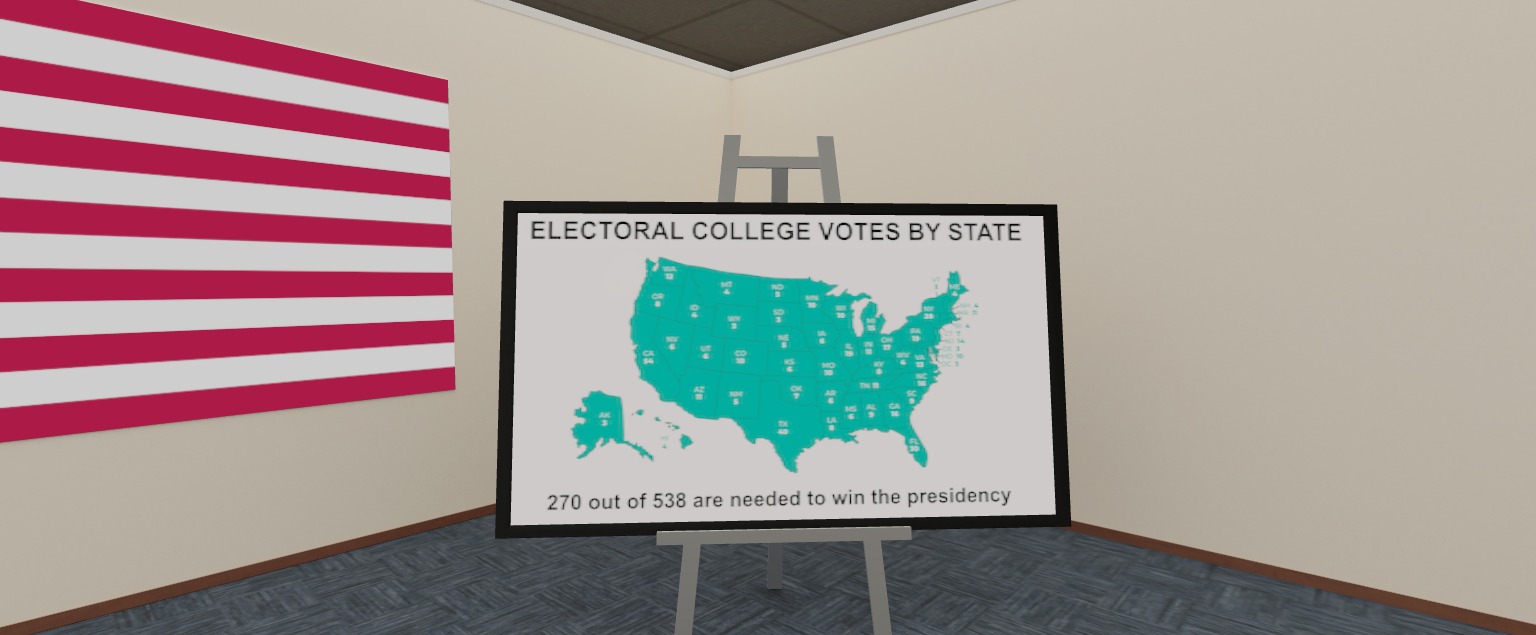 Head toward the Electoral College infographic, where you'll find all fifty states and their two-letter abbreviations. The map highlights certain states with higher numbers beside them, representing the number of electoral votes each state holds. The Electoral College has 538 members. Each state generally (although there are a few exceptions) gets electoral votes based on its number of Congress members, plus D.C. gets 3 votes. To win the presidency, a candidate needs 270 votes from the electoral college. ## Quick Fire Questions Which state has the largest amount of Electoral College votes? Why do you think this is?{.task} Compare the state with the largest and the smallest. Do you think a higher number of electoral votes translates to greater influence in elections?{.task} ## Get your Dates in Order {.objective .objective8}  To the left, you'll see an example of an electoral process calendar. Many people don't realize that electing a president takes almost two years and follows a typical cycle. In the spring of the year before an election, prospective candidates register with the Federal Election Commission to run for president; they then announce their intention to run. While many countries see newly elected leaders take office almost immediately, like Great Britain, the U.S. typically has an 11-week gap between Election Day and Inauguration Day. ## Quick Fire Questions How long does the presidential election cycle typically last?{.task} Looking at the Presidential Election poster, what is Super Tuesday? Why do you think it's called this?{.task} ## Your Vote Counts! {.objective .objective9}  Behind you, you'll see the poll worker handing out stickers to people who have voted. Poll workers are crucial for Election Day. They set up voting equipment, facilitate check-in, and sometimes even count ballots. While sign-up differs across states, poll workers are usually required to be registered voters and meet specific age criteria. You will see the "I Voted" stickers are on the table in front of the poll worker. Their exact origins are unknown, but they have become a symbol of pride and are believed to have emerged in the early 1980s. ## Quick Fire Questions What does the phrase "Your Vote Counts" mean to you?{.task} In what ways might the presence of poll workers influence the voting experience?{.task} # Extended Learning Use these extended research ideas to enhance your US Vote Experience and gain a deeper understanding of the voting process. 1. Send your students back into the experience and challenge them to discuss the "You Have the Right to" poster in the scene. How have these developed over time? 2. Can your students use the Electoral Process infographic as the basis for a research project into the Popular vote vs. The Electoral College vote? 3. Divide students into small groups and assign each group a different state. Ask them to look into each state's registration process and requirements. Use this as the basis for a research project into voter eligibility and discussions into how they think these laws affect the overall democratic process and voter turnout. # Cross-Curricular Links **Civic Responsibility** Discuss the importance of civic engagement and the role of voting in a democracy, linking to historical case studies, including ratifications to laws that have expanded access to voting. Highlight landmark changes like the Voting Rights Act of 196524 and the 19th Amendment granting women the right to vote. **Problem Solving Inquiry** Ask students to get into groups and form a political party. Give them 100 votes as a starting point, and ask them to determine how they could secure an additional 170 based on the Electoral College map. In their small groups, they can analyze the map alongside demographic data to identify states to target. This could open up a discussion about the "Blue Wall" states of Pennsylvania, Michigan, and Minnesota and the swing states. Based on their party's political ideals, they can develop and present a campaign strategy that outlines which states to focus on, the reasoning behind their choices, and how they would allocate advertising resources effectively. # Teacher Resources ### Download the Teacher Notes Below [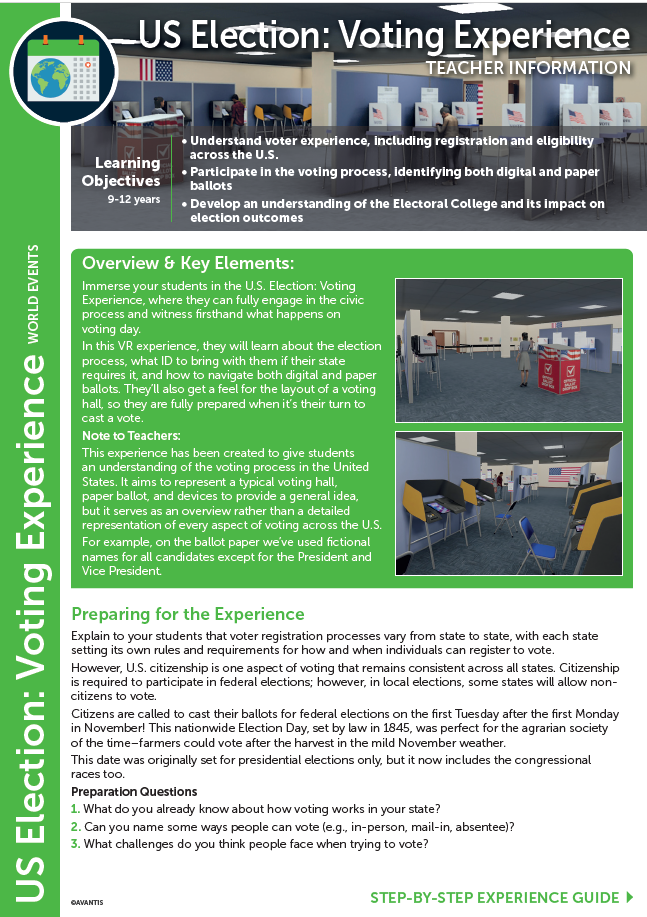](https://avnfs.com/394TltL2t3zYxXT9c2NitfN1codKiYvPhcae1P-R-k4?size=3983011&type=application%2Fpdf&name=US+Voting+Teacher+Notes+-+Teacher+Version-Eduverse+green.pdf) ### Download the Student Notes Below [](https://avnfs.com/c4wx9LNSWkb-WvU1zIqhUjjiFeRac9AFmBJIcgHChas?size=3576562&type=application%2Fpdf&name=US+Voting+Teacher+Notes+-+Student+Version+-+Eduverse+green.pdf)